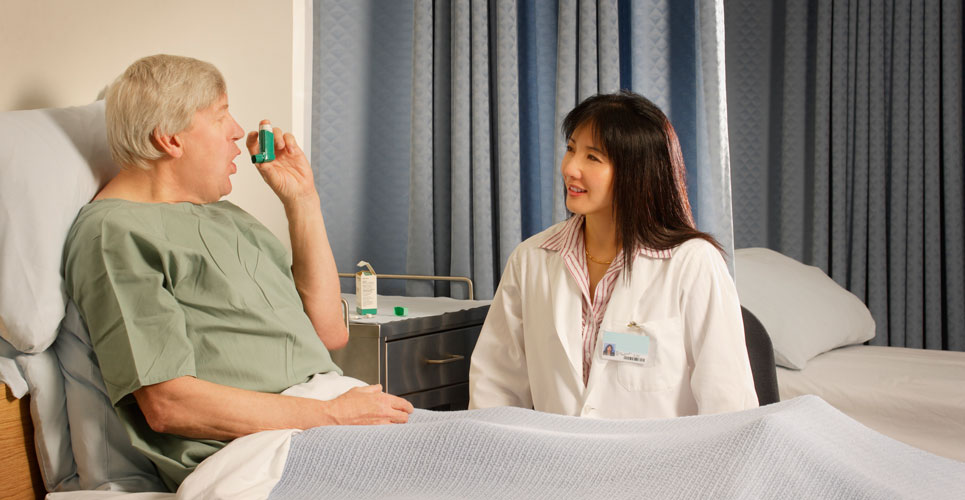Use of a ward-based pharmacy inhaler technique service led to reductions in asthma and COPD exacerbations as well as hospital admissions.
Inflammation and a narrowing of the small airways lead to the main symptoms of asthma which include cough, wheeze, shortness of breath and chest tightness. According to figures from the World Health Organisation, in 2019, an estimated 262 million people had asthma leading to 461,000 deaths. Chronic Obstructive Pulmonary Disease (COPD) is the third leading cause of death and in 2019 resulted in 3.23 million lives lost. Inhaled medication is the most common intervention to control the symptoms of both asthma and COPD yet a prerequisite for effective disease control is patients having the correct inhaler technique. However, incorrect inhaler technique is common with a 2016 systematic review finding that the prevalence of a correct technique was only 31%. Furthermore, a 2018 review of inhaler errors in both asthma and COPD, found an association between inhaler errors and worse health outcomes, highlighting the importance of some form of inhaler technique service to support patients. In fact, studies have shown that an inhaler technique service to asthmatic patients improved both inhaler technique scores and disease control.
Exacerbations of both asthma and COPD can lead to hospitalisation and a team from the Department of Medicines Management and Pharmacy Services, Leeds Teaching Hospital, Leeds, UK, examined the impact of an inhaler technique service, delivered on respiratory wards, on subsequent exacerbations. The team included patients admitted to hospital with an exacerbation of either asthma or COPD at the teaching hospital in Leeds and the service was provided by pharmacy support workers. Using an inhaler standards and competency document, the staff scored inhaler technique as optimal, satisfactory or unsatisfactory. Patients whose technique was deemed unsatisfactory or satisfactory received training from the pharmacy staff and where necessary, recommended to prescribers that an inhaler device should be changed. The outcomes of interest were the rate of moderate-to-severe exacerbations of asthma and COPD and hospital admissions due to such exacerbations, in the six months prior to and after receipt of inhaler technique training.
Findings
The inhaler technique service was provided to 266 patients with a mean age of 60.5 years (53% female), of whom 28% had asthma. Each patient was prescribed a mean of 2.3 inhalers and a total of 616 inhaler technique assessments were undertaken during the study period. Inhaler technique at baseline was deemed optimal in 28.6%, satisfactory in 49.4% and unsatisfactory for 22.1%. After training, the proportion of patients whose technique was deemed optimal increased to 91.5%. These improvements were achieved from a change of inhaler device (21.8%), optimising therapy without a change of device (34.9%) with the remainder due to training with the same device.
Six-month exacerbation and hospital admission data were available for 164 (62%) of all patients. Following the inhaler technique service and compared to pre-service levels, there was an overall and significant, 37% reduction in the mean number of exacerbations over a 6-month period (risk ratio, RR = 0.63, p < 0.05). This reduction occurred for both asthma (RR = 0.58, p < 0.05) and COPD (RR = 0.66, p < 0.05). Similarly, the overall rate of hospital admissions was also significantly reduced (RR = 0.56, p < 0.05) and again this occurred for both conditions. In addition, the inhaler technique service reduced the average length of hospital stay and cost of hospital admission for disease exacerbations.
The authors concluded by recommending that a ward-based inhaler technique service should be a core component of the care of patients with asthma and COPD.
Citation
Capstick TGD et al. Ward based inhaler technique service reduces exacerbations of asthma and COPD. Resp Med 2021

